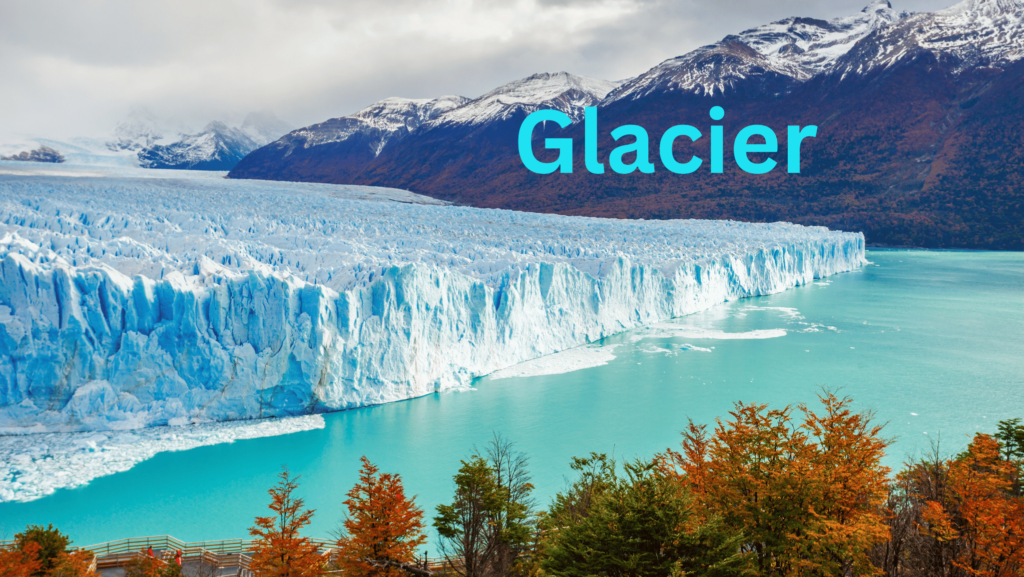A Glacier is a slow-moving mass of ice formed from accumulated snow over time. It moves downhill due to gravity.
Formation: Glaciers form when snow accumulates faster than it melts. Over time, the weight of the layers compresses the lower layers into solid ice.
Mountain/Valley Glaciers: Found in high mountain regions, flowing down valleys.Ice Sheets: Enormous glaciers that cover large land areas, like those found in Antarctica and Greenland.
Movement: Although glaciers move slowly, they have the power to shape landscapes by eroding rock and carving valleys.
Significance: Glaciers store about 75% of the world’s freshwater and play a crucial role in regulating sea levels and climate patterns.
Definition: An iceberg is a large piece of freshwater ice that has broken off (calved) from a glacier or ice shelf and floats in the ocean.
Formation: Icebergs form when chunks of ice break off from glaciers or ice shelves into the ocean due to the movement of glaciers and warming temperatures.
Visibility: Typically, only about 10% of an iceberg is visible above the water, with the remaining 90% submerged.
Size: Icebergs can range in size from small chunks of ice to massive floating structures several stories tall.
Danger: Icebergs can pose hazards to ships, like the famous incident with the Titanic in 1912.



